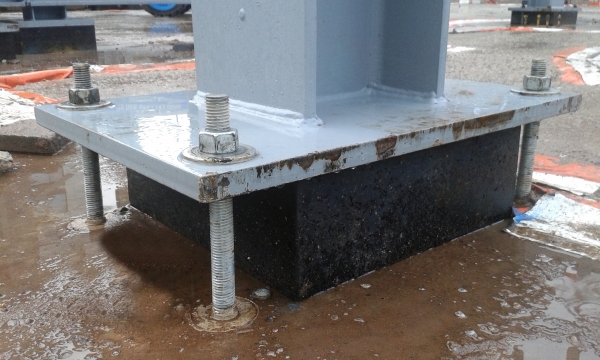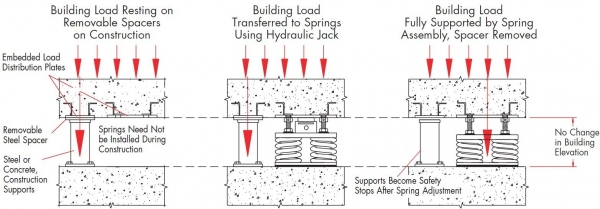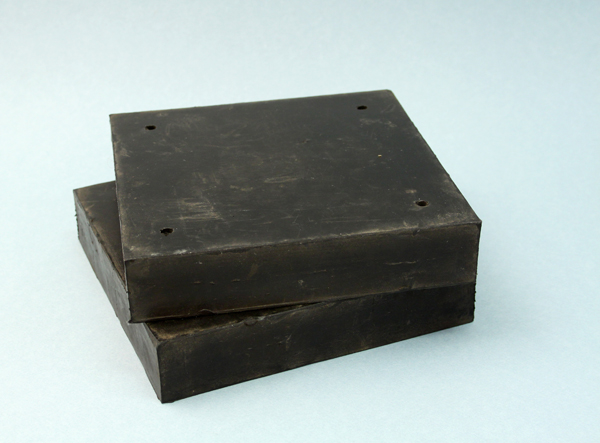
Isolation Bearings
Building isolation bearing are used to isolate entire buildings or elements such as walls, steelwork or columns. Every bearing is bespoke, designed to accept the specific loads and compress to isolate as required. A typical application would be to prevent vibrations from a nearby railway or underground line entering the building structure or to support raked seating in a cinema.
Isolation bearings can either be elastomeric (typically natural rubber) or helical metal spring. The nature of the vibration will dictate which type is required. More details on elastomeric and spring isolation bearings can be found via the links below
Bearing Design
Isolation bearings require compressing before they work correctly. Bearings are designed to compress by the correct amount under design loading and there are two main ways in which the compression is introduced - pre-compression or post-compression. Both systems have advantages and disadvantages, so the best solution will be likely to be construction led.
Pre-compressed
Pre-compressed bearings are supplied with a metal housing, which is used to compress the bearings prior to their installation using bolts which link the two halves. Bearing pre-compression is typically around 90% design loading. Because the majority of the compression is introduced beforehand, the bearing will not compress further during construction until the load surpasses the pre-compression level. This is useful for construction as, up to this point, the bearing presents a solid platform.
When the building weight surpasses the pre-compression load, the bearing will compress further. This releases the pre-compression bolts so that the bearing is now isolating. This method ensures that the structural engineer does not have to design for bearing movement until the very last stages of construction and the stresses that such movement may introduce. Another advantage is that once placed, the bearing requires no further adjustment so access is not required. The major disadvantage is that if the design load is incorrect, the bearing will either not release or may be overloaded and it may be impossible to adjust or replace. These bearings also limit flexibility in the future should extra capacity be required.
Post-compressed
Post compressed bearings are simpler in design and are designed to be compressed following building construction. The weight of the building is taken on temporary stanchions/pillars during construction and when the building is complete the load is transferred from the stanchions to the bearing. The major advantage of this method is that construction takes place on a solid platform and that weight can be transferred with only negligible movement in the structure.
The picture below shows the load transfer method. Using jacks or large bolts, the bearing is gradually compressed against the weight of the building. This continues until the stanchion becomes loose. It is removed and the bearing is then isolating correctly. Bearings can be adjusted or changed if the design loading is incorrect and future structural changes can also be accommodated. The load transfer method is flexible as the bearings are compressed only by the amount necessary to support the actual building weight � this removes risk from the installation. The disadvantage of this system is that access is required following construction.
Related Products
Elastomeric Isolation Bearings
Isolation bearing leaflet View Datasheet
View Datasheet BBP Bridge Quality Neoprene Bearing Pad View Datasheet
View Datasheet |
Isolation Bearings
 View Datasheet
View Datasheet |
Spring Isolation Bearings
Structural bearing leaflet View Datasheet
View Datasheet |










